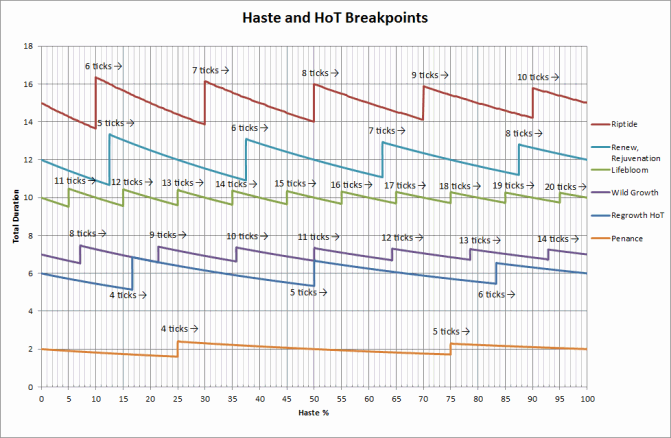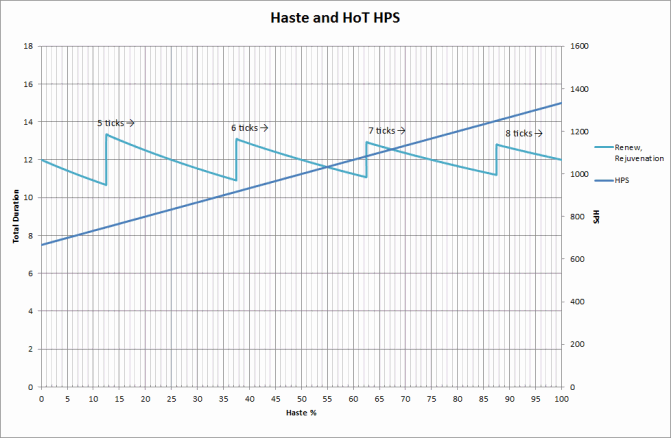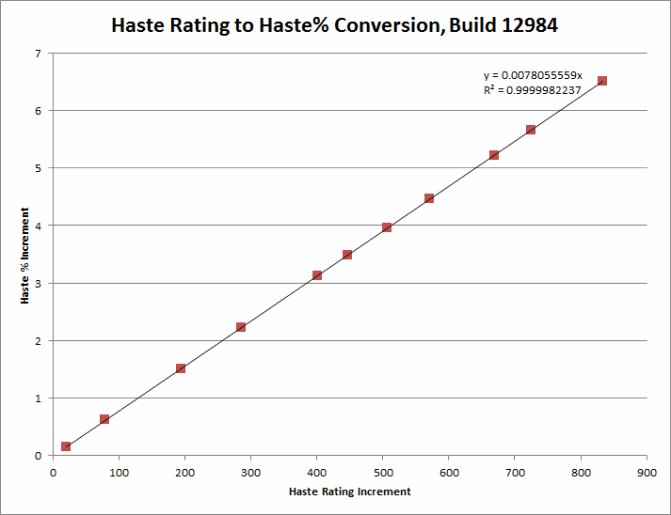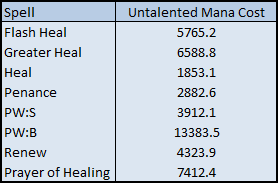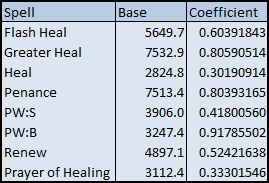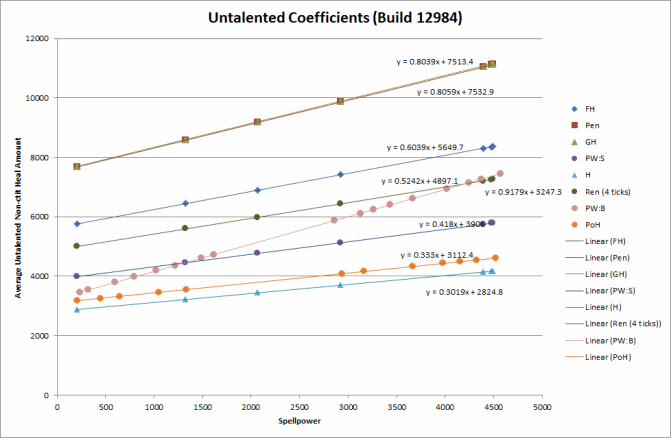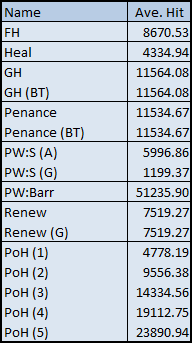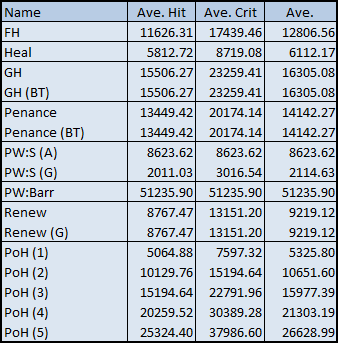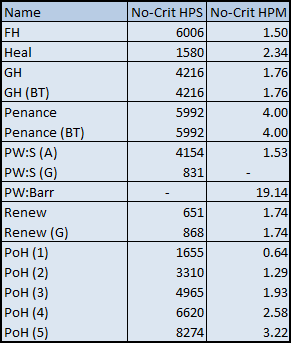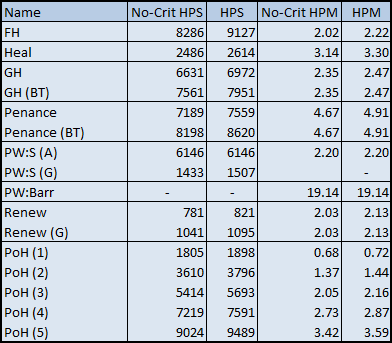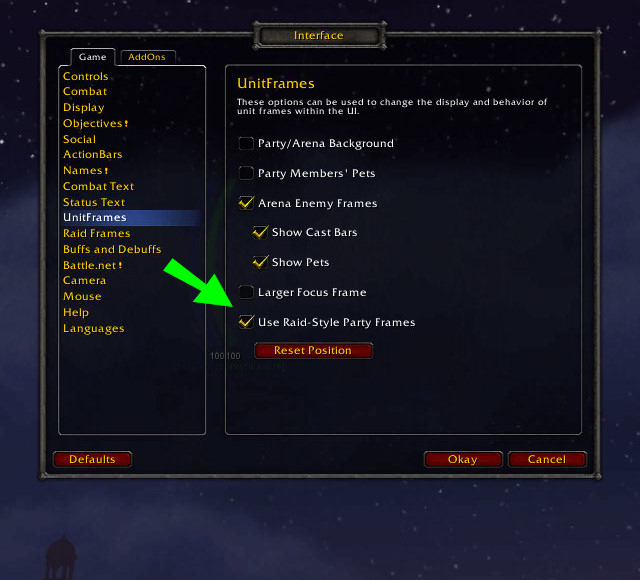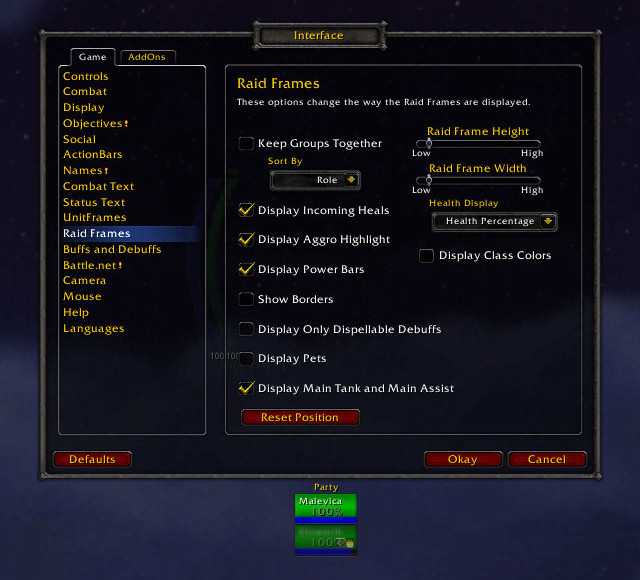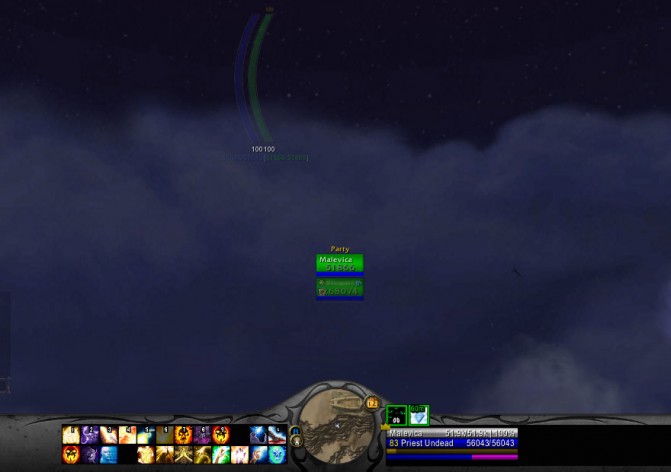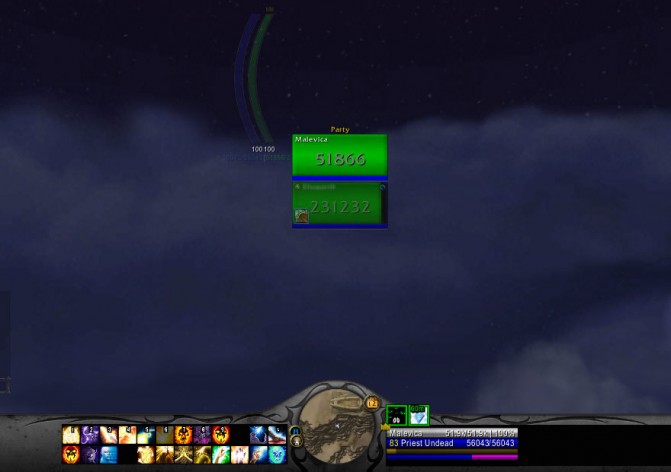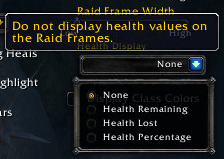
Way back in April Blizzard were talking about making Haste (and Crit) affect HoTs and DoTs. Here’s what they said:
All HoTs and DoTs will benefit from Haste and Crit innately. Hasted HoTs and DoTs will not have a shorter duration, just a shorter period in between ticks (meaning they will gain extra ticks to fill in the duration as appropriate).
I should point out that this also applies to channelled spells as well, which will now have the possibility to gain extra ticks just like HoTs. Penance-lovers rejoice!
Update: This appears not to be applying to Penance on Live, as of 16th of October. I don’t know if this is a bug or not, but it was working on Beta. Feel free to comment if you spot a Blue confirmation either way.
To begin with, in response to a thread on PlusHeal, I first did a quick-and-dirty test on the Beta. I tested with Renew (nominal 12s duration, 3s tick interval) with whatever haste I was standing up in (7.53% total haste), a Potion of Speed (11.52% total haste) and Borrowed Time (23.46% total haste)
If you want the raw numbers, they’re available by clicking through, but in summary:
- The total duration does initially reduce with haste as the ticks get shorter.
- When you get a certain amount of haste you get an extra tick and the duration jumps back up again. It’s possible for the duration to go above the nominal duration (12s in the case of Renew).
- If you cast a HoT while under a haste effect, such as Borrowed Time, all your ticks will be hasted, not just the ones that go off while the buff is active. However, the spell tooltip and the HoT buff you get both (misleadingly) update as soon as the haste effect fades.
- Haste rating per 1% Haste = 128.11
Breakpoints
Erdluf and Zusterke at PlusHeal pointed out that the current thinking is that you gain the extra tick whenever the difference between the nominal duration and the actual duration gets to be more than half a tick, and that this certainly can lead to the total duration exceeding the nominal duration when the extra tick is added. This is consistent with the original statement from Blizzard that the duration won’t change, on average at least.
So if you can speed up the HoT enough to fit at least half a tick in, you get a full extra tick.
Based on this, here’s where the total haste breakpoints should be for various HoTs. The reason the HoTs have different breakpoints is because they have different tick intervals and total durations.
| HoT Name | Breakpoints at (total haste): |
| Penance | 25%, 75% |
| Renew | 12.5%, 37.5%, 62.5%, 87.5% |
| Rejuvenation | 12.5%, 37.5%, 62.5%, 87.5% |
| Regrowth (HoT) | 16.666%, 50%, 83.333% |
| Lifebloom | 5%, 15%, 25%, 35%, 45%, 55%, 65%, 75%, 85%, 95% |
| Wild Growth | 7.15%, 21.43%, 35.715%, 50%, 64.285%, 78.57%, 92.855% |
| Riptide | 10%, 30%, 50%, 70%, 90% |
I went back and tested this in more detail on Renew, which is a 3s tick interval, 4-tick HoT, and it does appear that the transition to an extra tick does indeed happen at the 12.5% haste point as expected. Here’s the result of a few trials I did:
Healing per mana (HPM) and Healing per cast time (HPCT)
Here’s a look at the way haste affects the total duration and numbers of ticks of various HoTs:
Note that the numbers of ticks for Rejuvenation and Renew do not include the instant heal from Gift of the Earthmother and Divine Touch respectively, since these aren’t true ticks.
What you can see in this graph is the duration of the HoT decreasing as your haste increases (not quite linearly, haste does have a bit of a curve on it because of the way it’s calculated) and then when you reach the breakpoint the extra tick is added and the duration jumps up again, to somewhere above the nominal duration.
I’ve labelled the breakpoints to indicate the total number of ticks you’ll be getting from that breakpoint onwards as you increase your haste. So looking at the line for Riptide at the top, after the first breakpoint you’ll now be getting 6 ticks instead of the standard 5.
This graph also lets you see graphically the locations of the breakpoints for the HoTs, so if the table above wasn’t clear enough, you can use the graph instead. You can see on this graph, for example, the breakpoints for Renew and Rejuvenation at total haste percentages of 12.5%, 37.5% and 62.5%.
From a healing-per-mana (HPM) and healing-per-cast-time (HPCT) point of view, you want as many ticks as possible, because each extra tick adds a chunk of healing for no extra cost in time or mana. This makes it highly desireable to get above a breakpoint. However, HPM and HPCT only change at a breakpoint.
Healing per second (HPS)
I also wanted to look at things from an different angle: healing per second. In this case, since the result is similar for every HoT, I’ve just picked out Renew/Rejuvenation as an example. (I’ve arbitrarily given each tick a value of 2k, which is about right for Renew on the beta. Look at the shape, rather than the numbers.)
The thing to notice here is that the HPS curve increases linearly while your haste increases, it doesn’t change around breakpoints. So if you’re using your HoTs for their throughput, you’re not going to see a radical difference in HPS from stepping over a “breakpoint”.
Of course, you will notice the difference between a HoT with a 10.7s duration and one with a 13.2s duration (the biggest jump in duration for Renew/Rejuvenation) when you have to spend GCDs more often to refresh your HoT, and of course refreshing a HoT less often saves mana, so you will still want to get over that breakpoint.
Updated 3rd October: Improved clarity and readability. Added more HoTs and more detail to the main graph. Included all the breakpoints in tabular form as well, for reference.





